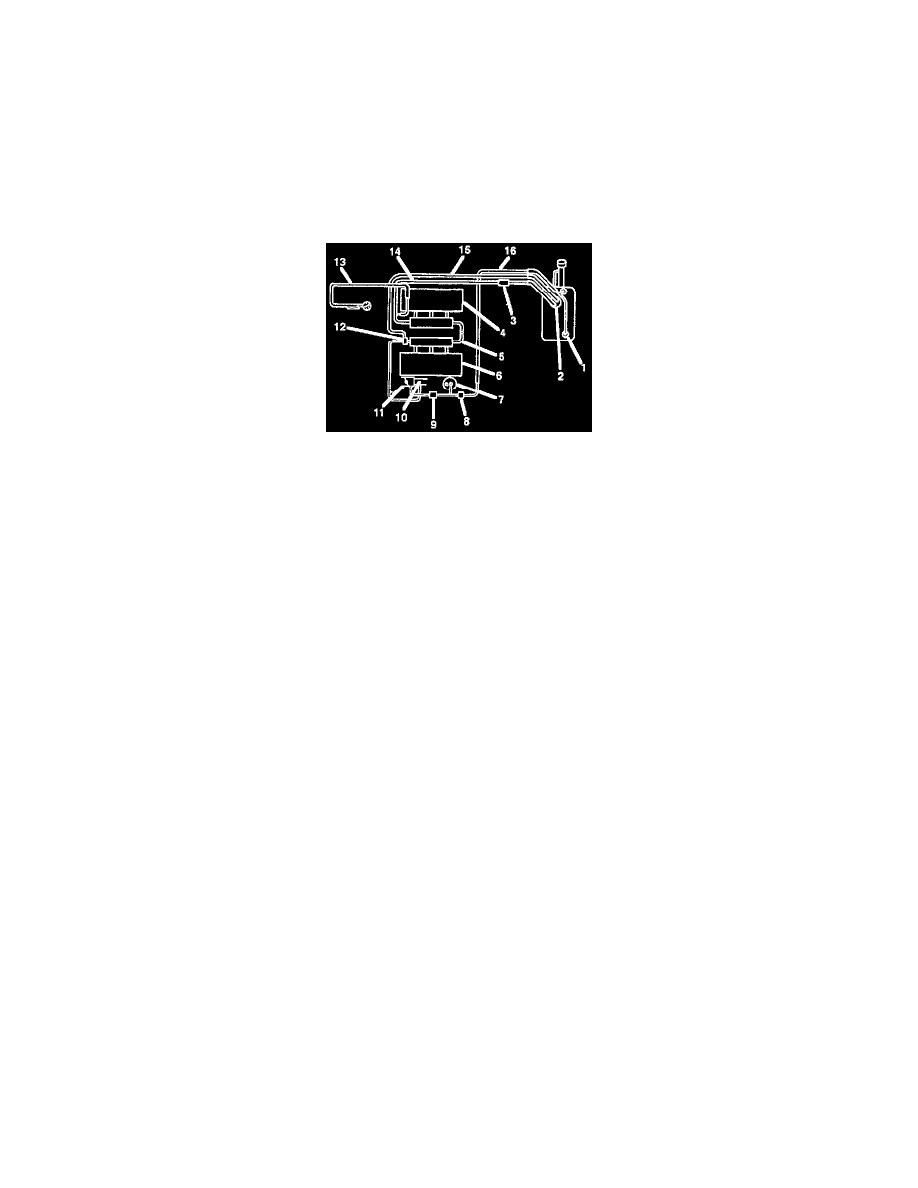Rodeo LS 4WD V6-3.2L (1998)

Fuel Pressure: Testing and Inspection
Circuit Description
When the ignition switch is turned "ON", the Powertrain Control Module (PCM) will turn "ON" the in-tank fuel pump. The in-tank fuel pump will
remain "ON" as long as the Engine is cranking or running and the PCM is receiving 58X Crankshaft position pulses. If there are no 58X
Crankshaft position pulses, the PCM will turn the in-tank fuel pump "OFF" 2 seconds after the ignition switch is turned "ON" or 2 seconds after
the Engine stops running.
The in-tank fuel pump is an electric pump within an integral reservoir. The in-tank fuel pump supplies fuel through an in-line Fuel Filter to the fuel
rail assembly. The fuel pump is designed to provide fuel at a pressure above the pressure needed by the fuel injectors. A fuel pressure regulator,
attached to the fuel rail, keeps the fuel available to the fuel injectors at a regulated pressure. Unused fuel is returned to the fuel tank by a separate
fuel return line.
(1) Roll Over and Float Valve
(2) Fuel Pump
(3) Fuel Filter
(4) Right Bank
(5) Fuel Rail
(6) Left Bank
(7) EVAP Canister
(8) Check and Relief Valve
(9) Vacuum Switch
(10) Common Chamber
(11) Throttle Body
(12) Fuel Pressure Regulator
(13) J 34730-1 Fuel Pressure Gauge Assembly
(14) Fuel Feed Line
(15) Fuel Return Line
(16) EVAP Line
Test Description
Number(s) below refer to the step number(s) in the Diagnostic Test:
2. Connect the fuel pressure gauge to the fuel feed line as shown in the fuel system illustration. Wrap a shop towel around the fuel pressure
connection in order to absorb any fuel leakage that may occur when installing the fuel pressure gauge. With the ignition switch "ON" and the fuel
pump running, the fuel pressure indicated by the fuel pressure gauge should be 333-376 kPa (48-55 psi). This pressure is controlled by the amount
of pressure the spring inside the fuel pressure regulator can provide.
3. A fuel system that cannot maintain a constant fuel pressure has a leak in one or more of the following areas:
-
The fuel pump check valve.
-
The fuel pump flex line.
-
The valve or valve seat within the fuel pressure regulator.
-
The fuel injector(s).
4. Fuel pressure that drops off during acceleration, cruise, or hard cornering may case a lean condition. A lean condition can cause a loss of power,
surging, or misfire. A lean condition can be diagnosed using a Tech 1 Scan Tool. If an extremely lean condition occurs, the oxygen sensor(s) will
stop toggling. The oxygen sensor output voltage(s) will drop below 500 mV. Also, the fuel injector pulse width will increase.
NOTE: Make sure the fuel system is not operating in the "Fuel Cut-Off Mode."
When the Engine is at idle, the manifold pressure is low (high vacuum). This low pressure (high vacuum) is applied to the fuel pressure regulator
diaphragm. The low pressure (high vacuum) will offset the pressure being applied to the fuel pressure regulator diaphragm by the spring inside the
fuel pressure regulator. When this happens, the result is lower fuel pressure. The fuel pressure at idle will vary slightly as the barometric pressure
changes, but the fuel pressure at idle should always be less than the fuel pressure noted in step 2 with the Engine "OFF".
